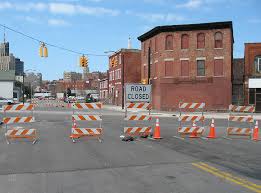Ensuring safety at road construction sites is essential for both workers and the public. One of the most effective ways to maintain site safety is by using a safety barricade. Choosing the right safety barricade helps prevent accidents, guide traffic efficiently, and protect everyone near the construction zone.
Assess the Site Requirements
Before selecting a barricade, it is important to understand the specific needs of your construction site. Key factors should guide your choice:
- Consider road type and traffic density, including peak hours and vehicle size.
- Determine project duration and frequency of site changes.
- Check weather conditions to ensure barricade durability.
- Evaluate nearby pedestrian traffic and potential hazards.
Evaluating these factors ensures you choose a barricade suitable for your project’s conditions and safety requirements. Proper planning can prevent costly mistakes and accidents.
Choose the Right Material
Selecting the right material for your safety barricade affects both durability and effectiveness. Common options include:
- Plastic: Lightweight, portable, and easy to store, ideal for short-term projects.
- Metal: Heavy and stable, suitable for high-speed traffic areas and long-term use.
- Wood: Cost-effective but requires regular maintenance and is better for temporary setups.
Choosing the right material ensures long-term usability, reduces replacement costs, and complies with safety standards.
Visibility and Signage
Barricades must be clearly visible to drivers and pedestrians at all times. Reflective strips, bright colours, and LED lights enhance visibility in low-light conditions. Proper signage attached to barricades communicates hazards effectively, keeping workers and the public safe. Regular inspection of signage and reflective surfaces is also essential to maintain effectiveness.
Stability and Safety Features
A stable barricade prevents accidents and ensures site safety. Key features to consider include:
- Weighted bases to prevent tipping.
- Interlocking systems for enhanced stability.
- Adjustable feet for uneven surfaces.
- Smooth edges to reduce injury risk for workers and passersby.
Including these features reduces the risk of the barricade falling or causing injuries, even in challenging conditions.
Ease of Transport and Storage
Efficient transport and storage make barricades easier to manage across multiple sites. Consider the following:
- Foldable or stackable design for easy storage.
- Lightweight for frequent relocation between sites.
- Modular design for flexibility on different projects.
- Compact designs help reduce storage space requirements.
Selecting barricades that are easy to move and store improves efficiency and prolongs the barricade’s life.
Compliance and Standards
Always ensure your barricade meets local safety regulations. Certification and adherence to guidelines protect workers and reduce liability. Using approved barricades ensures your site is recognised as safe by inspectors. Regularly updating your equipment also helps maintain compliance over time.
Integrating Road Work Signs
In addition to barricades, adding road work sign displays increases awareness and safety. To use them effectively:
- Place road work sign boards near or behind barricades.
- Clearly indicate lane closures, detours, and hazards ahead.
- Combine barricades with signs for maximum visibility and communication.
- Ensure signs are visible from a sufficient distance for approaching traffic.
These steps create a safer environment for both workers and drivers, reducing the risk of accidents near construction zones.
Conclusion
Choosing the right barriers requires careful consideration of site conditions, material, visibility, stability, transport, and compliance. When combined with proper signage, these measures provide comprehensive protection for workers and the public. Thoughtful planning ensures road construction projects proceed safely, efficiently, and with minimal disruption to traffic.



